Impact of IT Devices Production Quality on the Level of Protection of Processed Information against the Electromagnetic Infiltration Process
Abstract
1. Introduction
- a fulfilment of appropriate EMC requirements (e.g., MIL-STD-461G, EMC Directive) by all electronic devices of a given type;
2. Materials and Methods
2.1. Test Devices
- mother board;
- graphic card;
- CD/DVD;
- HDD (SSD);
- LCD display;
- keyboard;
2.2. Test Conditions
- data reading from CD/DVD;
- data reading and recording on HDD (SSD);
- data reading and recording in RAM;
- recording of a selected sign from a keyboard in a text editor;
- displaying of a video on LCD display.
3. Results
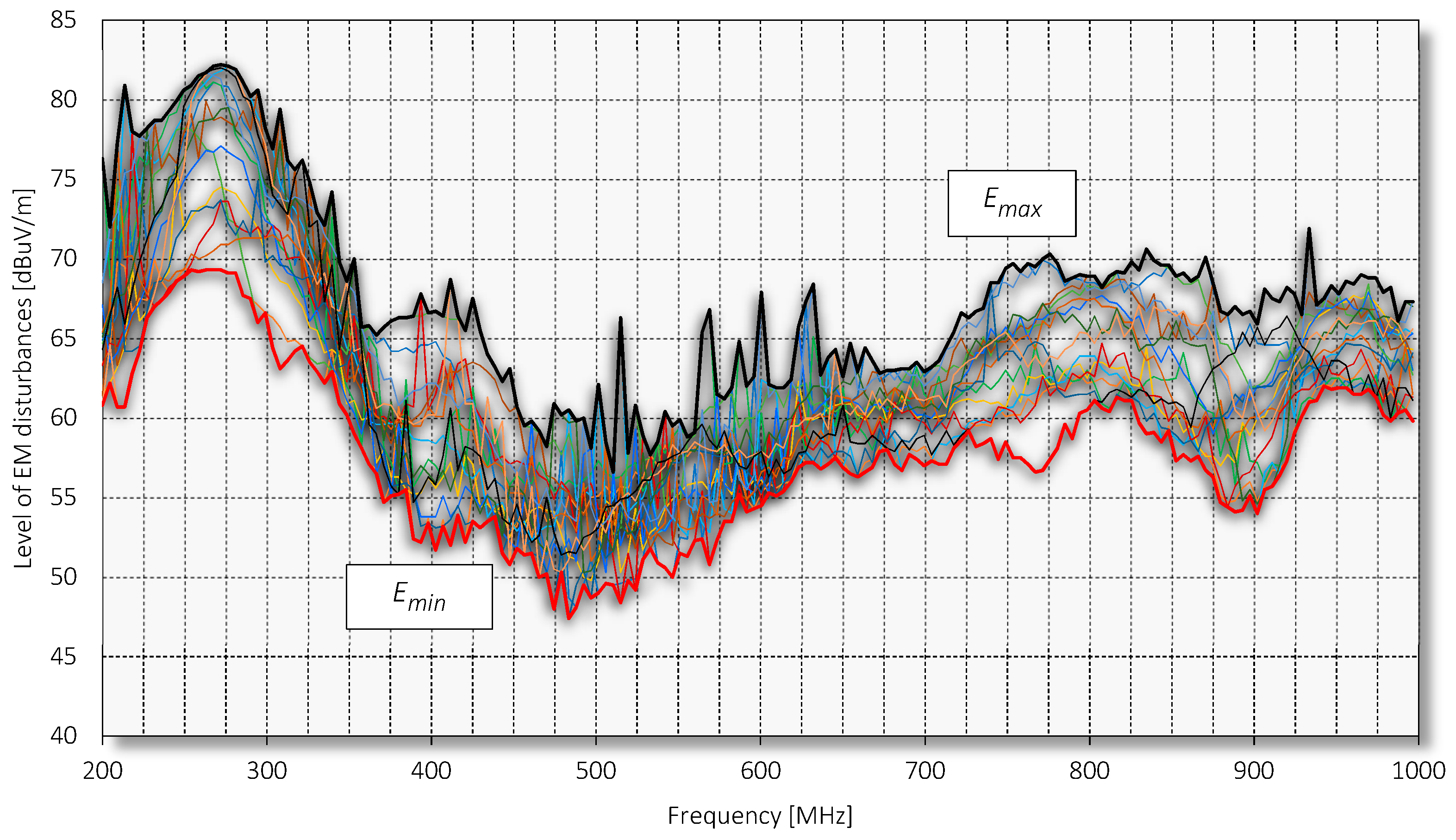
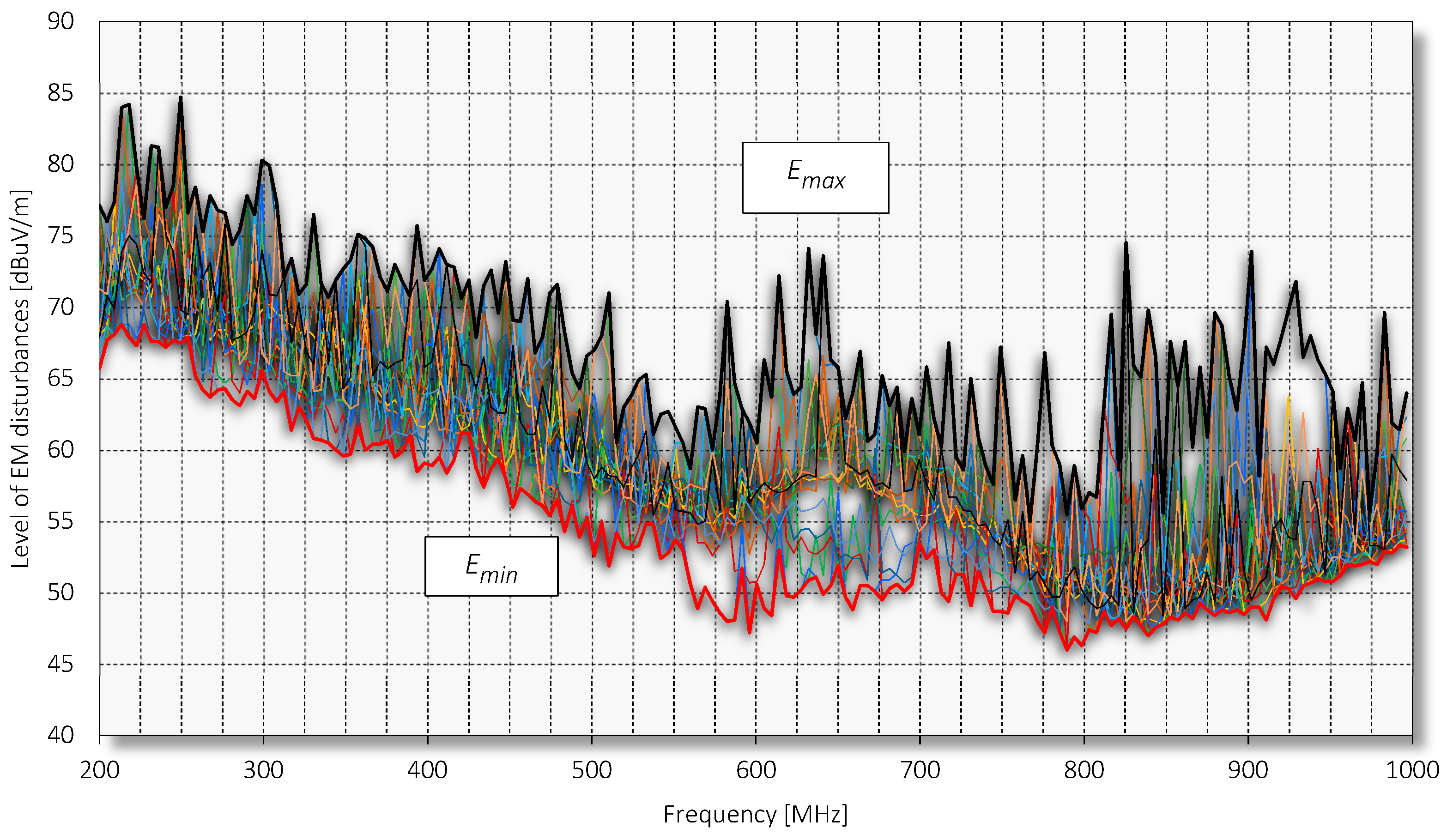
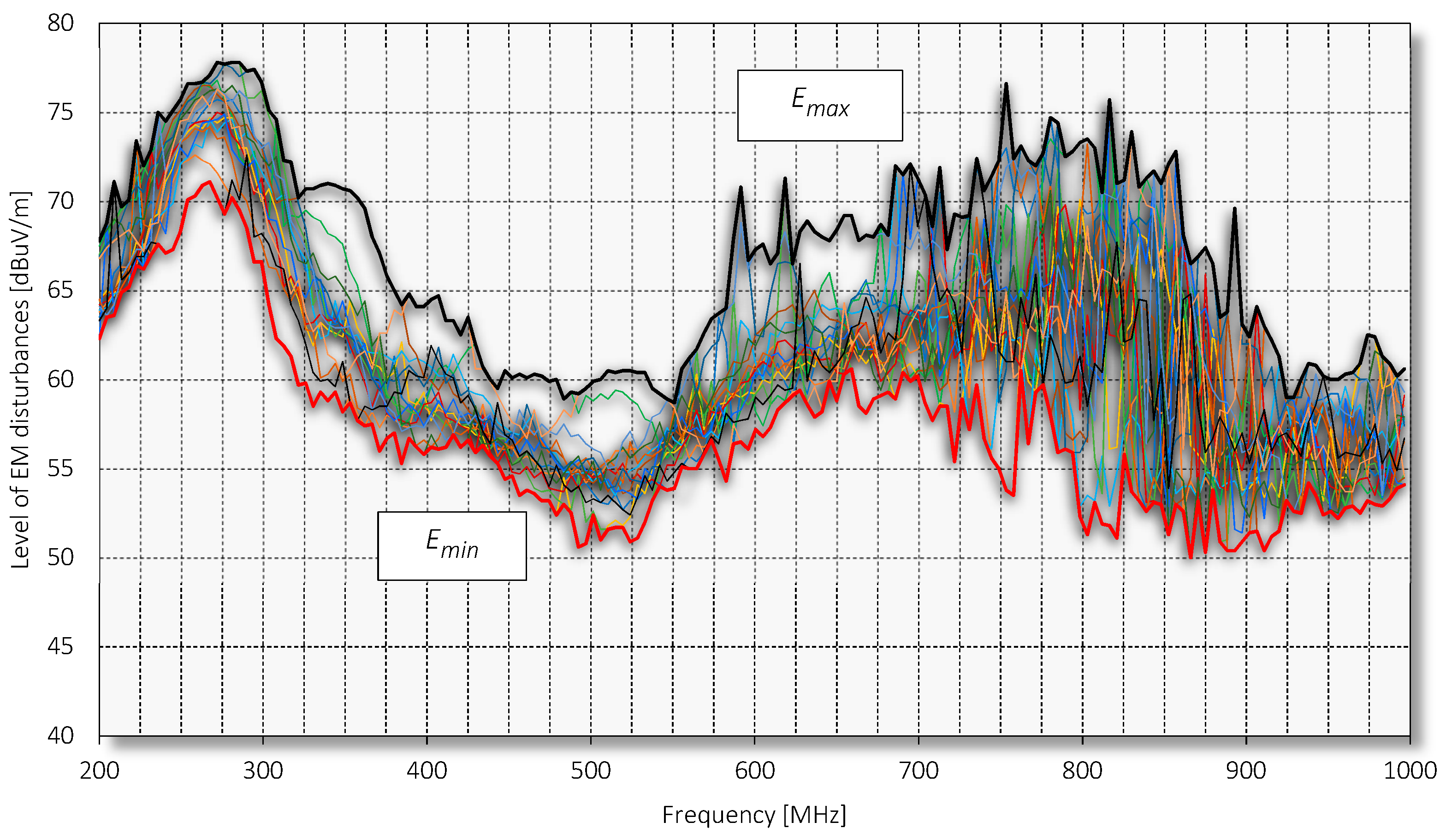

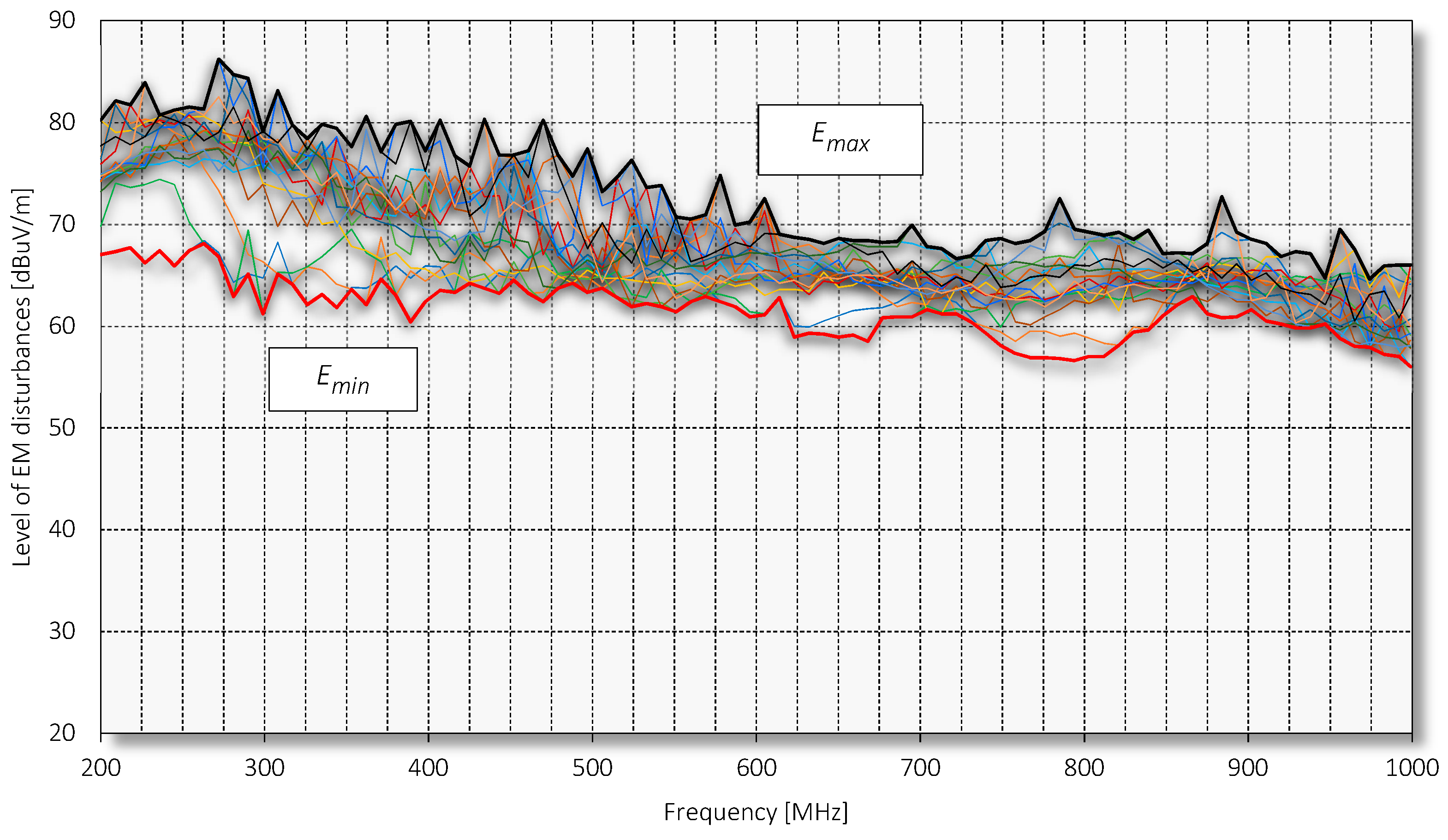
Differences and Average Values of Levels of Electromagnetic Disturbances
4. Discussions
4.1. Valuable Emissions
4.2. Attenuation of Valuable Emissions
- rx—distance r1 or r2;
- A—unaccepted level of EM emission;
- B—attenuation inserted by shielding;
- D—attenuation inserted by distance rx.
- The value of D depends on the shielding material.
5. Conclusions
Funding
Conflicts of Interest
References
- Lee, H.K.; Kim, J.H.; Kim, S.C. Emission Security Limits for Compromising Emanations Using Electromagnetic Emanation Security Channel Analysis. IEICE Trans. Commun. 2639, 10, 2639–2649. [Google Scholar] [CrossRef]
- Xie, C.h.; Wang, T.; Hao, X.; Yang, M.; Zhu, Y.; Li, Y. Localization and Frequency Identification of Large-Range Wide-Band Electromagnetic Interference Sources in Electromagnetic Imaging System. Electronics 2019, 8, 499. [Google Scholar] [CrossRef]
- Zhang, N.; Lu, Y.H.; Cui, Q.; Wang, Y.Y. Investigation of Unintentional Video Emanations from a VGA Connector in the Desktop Computers. IEEE Trans. Electromagn. Compat. 2017, 59, 1826–1834. [Google Scholar] [CrossRef]
- Glowacz, A.; Glowacz, Z. Diagnostics of stator faults of the single-phase induction motor using thermal images, MoASoS and selected classifiers. Measurement 2016, 93, 86–93. [Google Scholar] [CrossRef]
- Yuan, K.; Grassi, F.; Spadacini, G.; Pignari, S.A. Crosstalk-Sensitive Loops and Reconstruction Algorithms to Eavesdrop Digital Signals Transmitted Along Differential Interconnects. IEEE Trans. Electromagn. Compat. 2017, 59, 256–265. [Google Scholar] [CrossRef]
- Kubiak, I. Video signal level (colour intensity) and effectiveness of electromagnetic infiltration. Bull. Pol. Acad. Sci. – Tech. Sci. 2016, 64, 2007–2018. [Google Scholar] [CrossRef][Green Version]
- Loughry, J.; Umphress, D.A. Information Leakage from Optical Emanations. ACM Trans. Inf. Syst. Secur. 2002, 5, 262–289. [Google Scholar] [CrossRef]
- Kubiak, I. Laser printer as a source of sensitive emissions. Turk. J. Electr. Eng. Comput. Sci. 1354, 26, 1354–1366. [Google Scholar]
- Cihan, U.; Aşık, U.; Cantürk, K. Analysis of Information Leakages on Laser Printers in the Media of Electromagnetic Radiation and Line Conductions. In Proceedings of the International Conference on Information Security and Cryptology, Ankara, Turkey, 30–31 October 2015. [Google Scholar]
- Wu, C.; Gao, F.; Dai, H.; Wang, Z.A. Topology-Based Approach to Improve Vehicle-Level Electromagnetic Radiation. Electronics 2019, 8, 364. [Google Scholar] [CrossRef]
- Jurič, I.; Nedeljković, U.; Novaković, D.; Pinćjer, I. Visual experience of noise in digital images. Tehnicki Vjesnik-Technical Gazette 2016, 23. [Google Scholar] [CrossRef]
- Tajima, K.; Ishikawa, R.; Mori, T.; Suzuki, Y.; Takaya, K. A study on risk evaluation of countermeasure technique for preventing electromagnetic information leakage from ITE. In Proceedings of the International Symposium on Electromagnetic Compatibility EMC Europe, Angers, France, 4–7 September 2017. [Google Scholar] [CrossRef]
- Telecommunication Standardization Sector of ITU. K.115: Mitigation methods against electromagnetic security threats. Available online: https://www.itu.int/rec/T-REC-K.115-201511-I (accessed on 16 September 2019).
- Kuhn, M.G. Compromising Emanations: Eavesdropping Risks of Computer Displays. Technical Report. 2003. Available online: http://www.cl.cam.ac.uk/TechReports/ (accessed on 16 September 2019).
- Cakir, G.; Cakir, M.; Sevgi, L. Electromagnetic radiation from multilayer printed circuit boards: a 3D FDTD-based virtual emission predictor. Turk. J. Electr. Eng. Comput. Sci. 2009, 17, 315–326. [Google Scholar]
- Litao, W.; Bin, Y. Analysis and Measurement on the Electromagnetic Compromising Emanations of Computer Keyboards. In Proceedings of the Seventh International Conference on Computational Intelligence and Security, Sanya, Hainan, China, 3–4 December 2011; pp. 640–643. [Google Scholar]
- Ko, W.L. Time Domain Solution of Electromagnetic Problems. Electromagnetics 1992, 12, 403–433. [Google Scholar]
- Kubiak, I. The Influence of the Structure of Useful Signal on the Efficacy of Sensitive Emission of Laser Printers. Measurement 2018, 119, 63–76. [Google Scholar] [CrossRef]
- Chervyakov, N.; Lyakhov, P.; Kaplun, D.; Butusov, D.; Nagornov, N. Analysis of the Quantization Noise in Discrete Wavelet Transform Filters for Image Processing. Electronics 2018, 7, 135. [Google Scholar] [CrossRef]
- Kubiak, I. LED printers and safe fonts as an effective protection against the formation of unwanted emission. Turk. J. Electr. Eng. Comput. Sci. 2017, 25, 4268–4279. [Google Scholar] [CrossRef]
- Kubiak, I. TEMPEST font counteracting a non-invasive acquisition of text data. Turk. J. Electr. Eng. Comput. Sci. 2018, 26, 582–592. [Google Scholar] [CrossRef]
- Telecommunication Standardization Sector of ITU. Test methods and guide against information leaks through unintentional electromagnetic emissions. Available online: https://www.itu.int/rec/T-REC-K.84-201101-I/en (accessed on 16 September 2019).
- Kubiak, I. Influence of the method of colors on levels of electromagnetic emissions from video standards. IEEE Trans. Electromagn. Compat. 2018, 61, 1–9. [Google Scholar] [CrossRef]
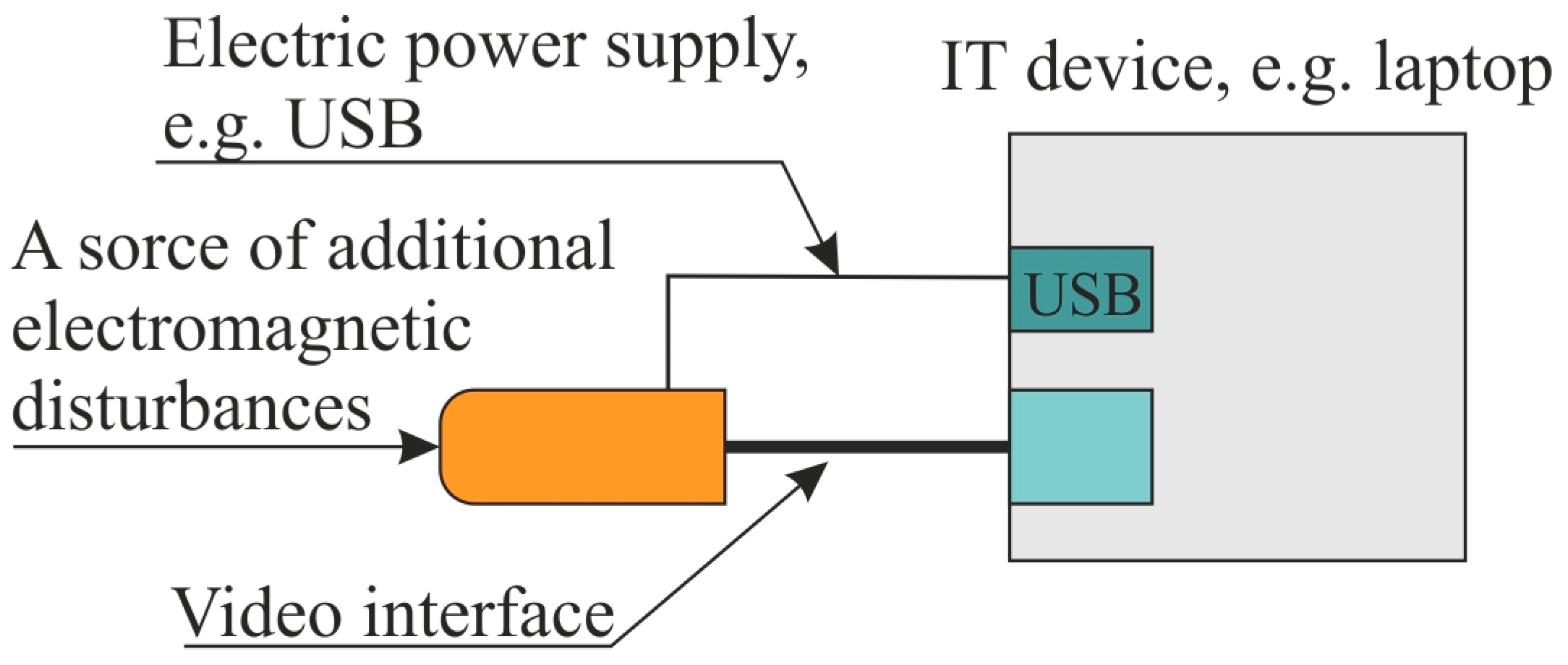
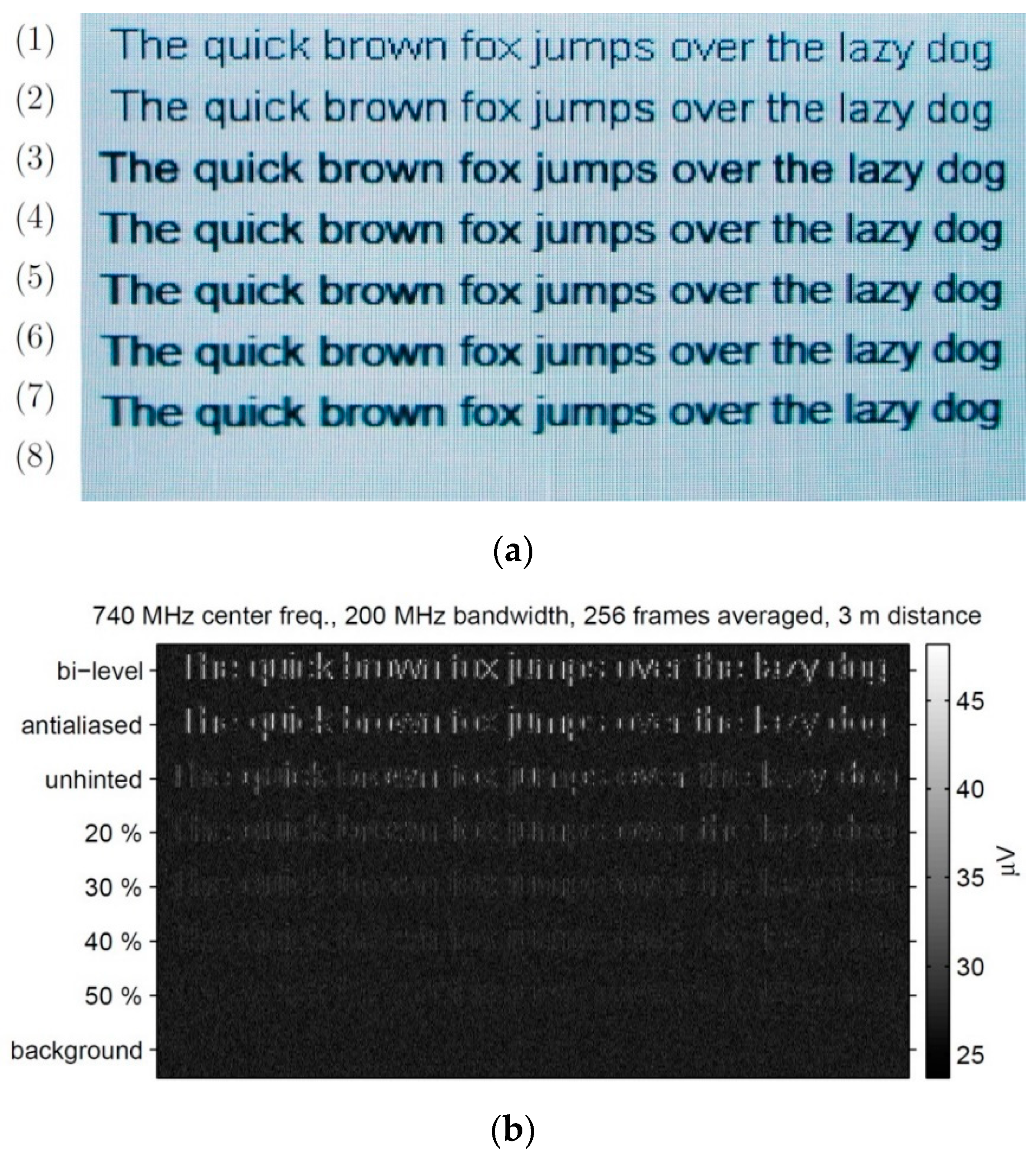
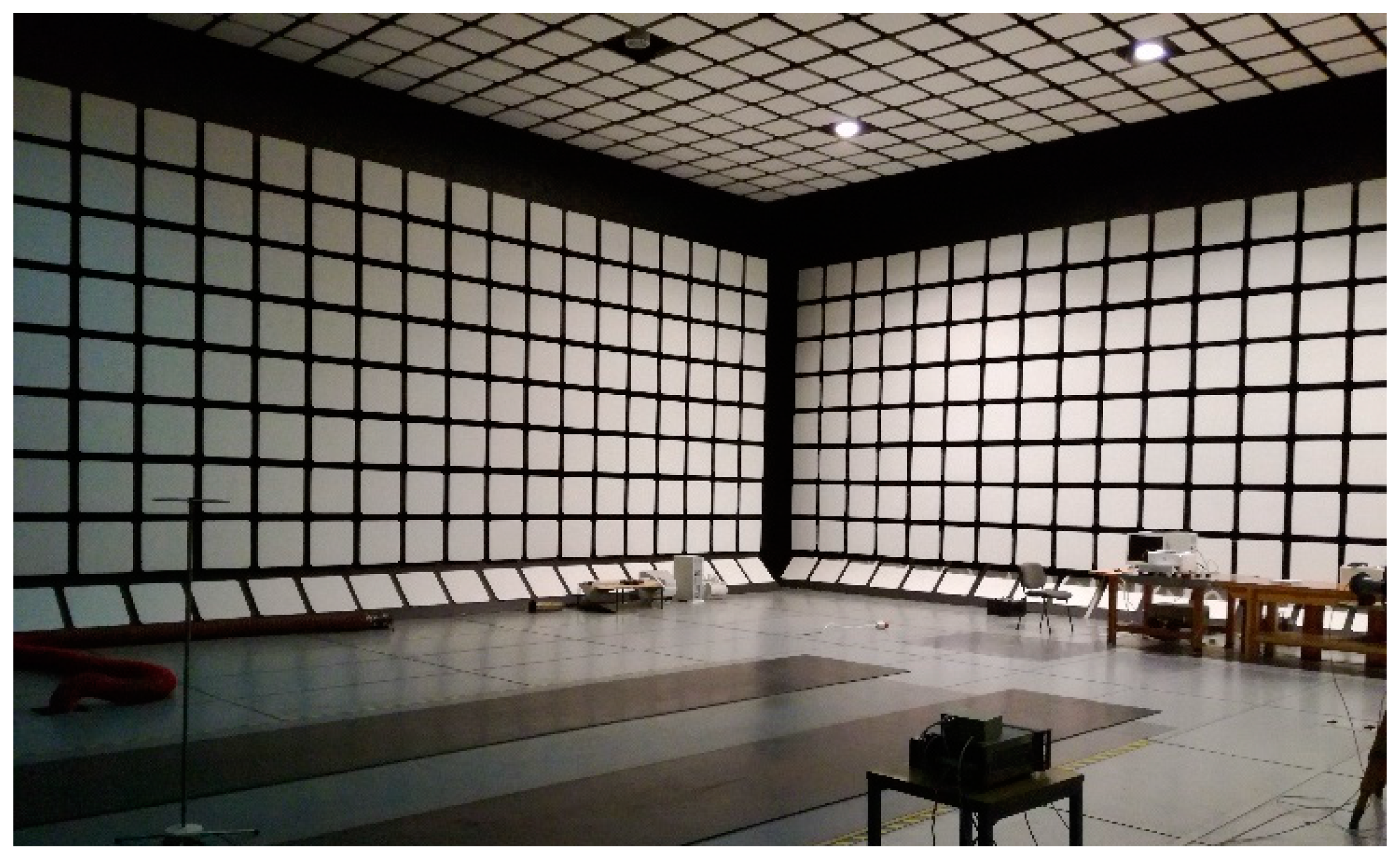
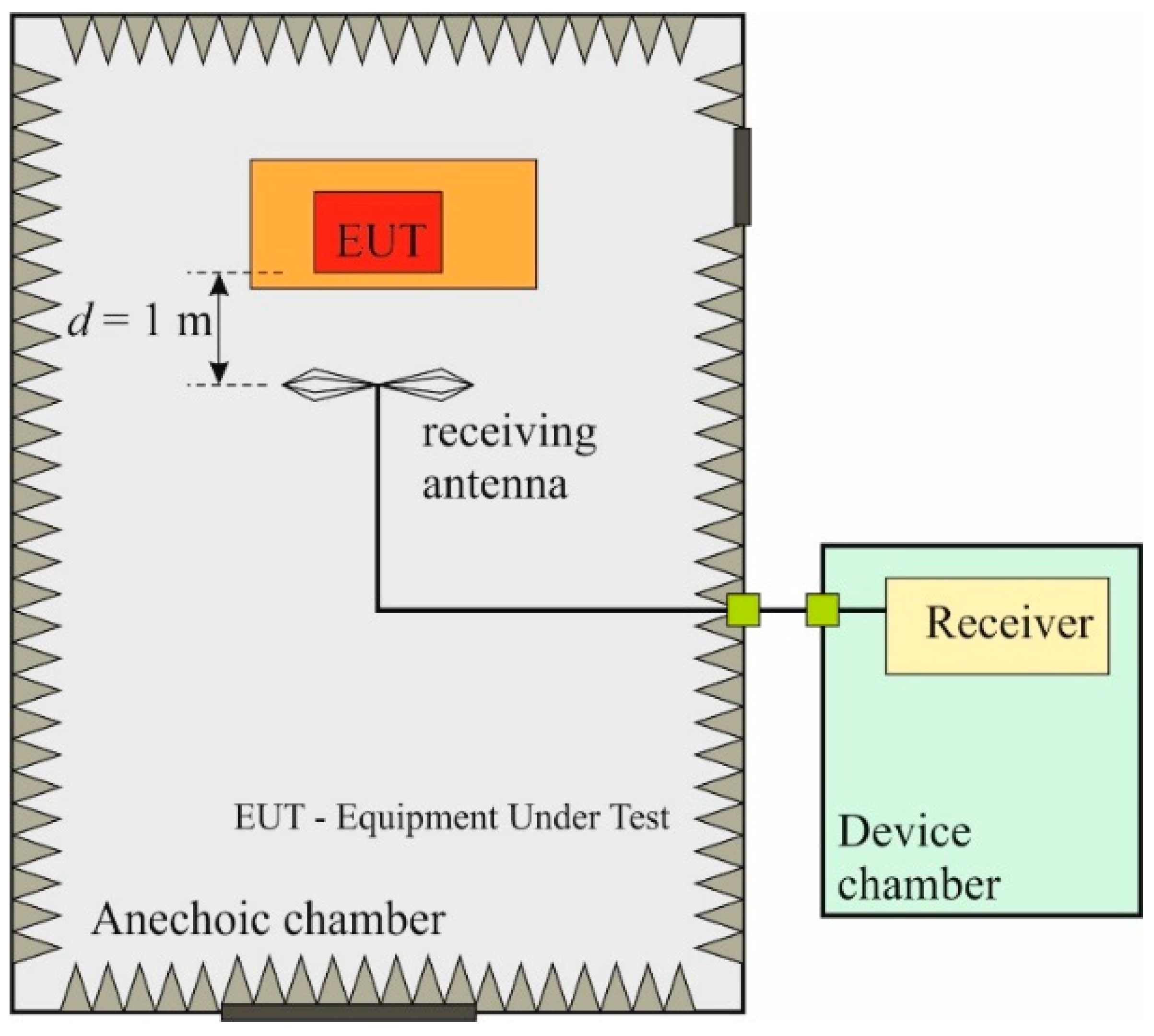
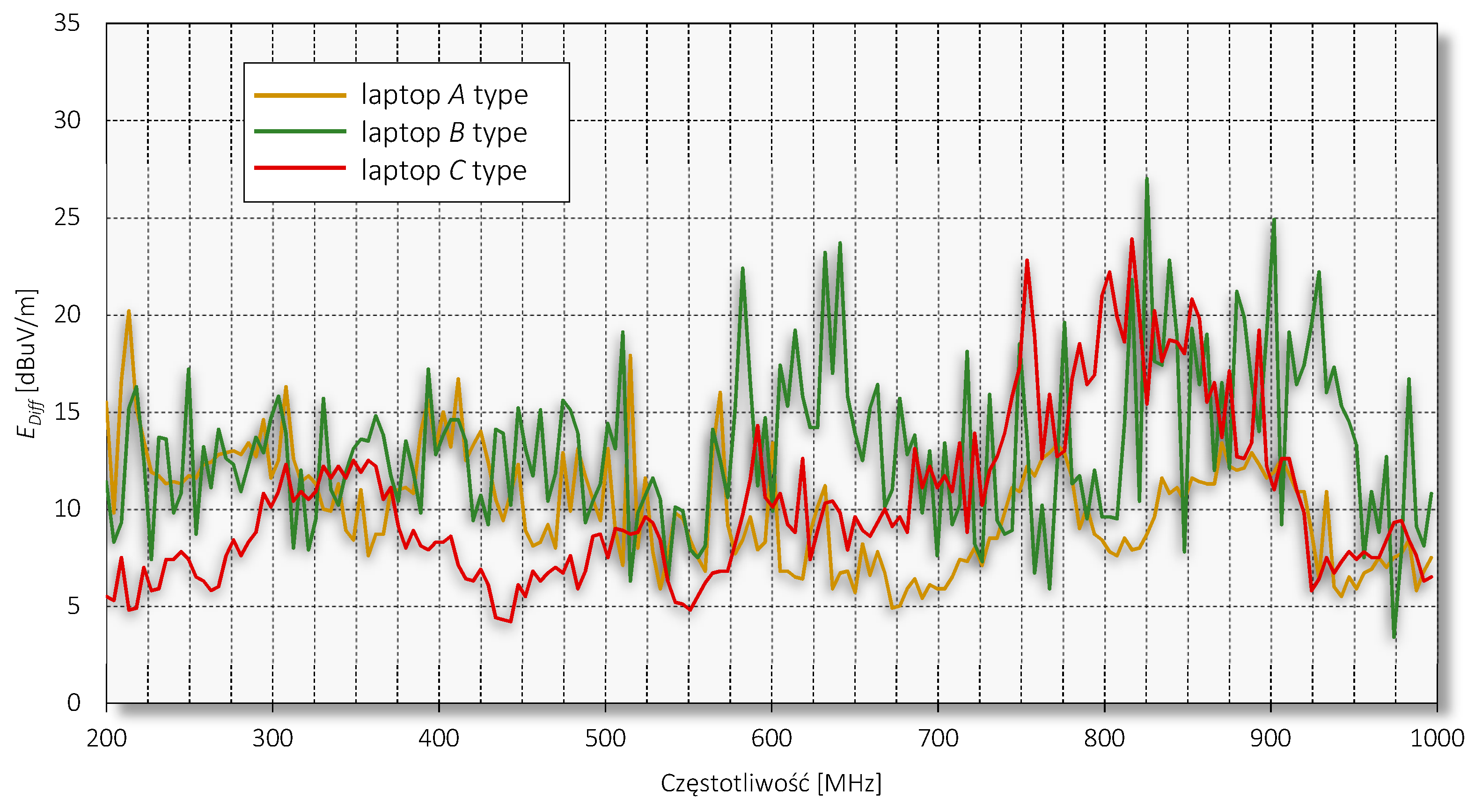
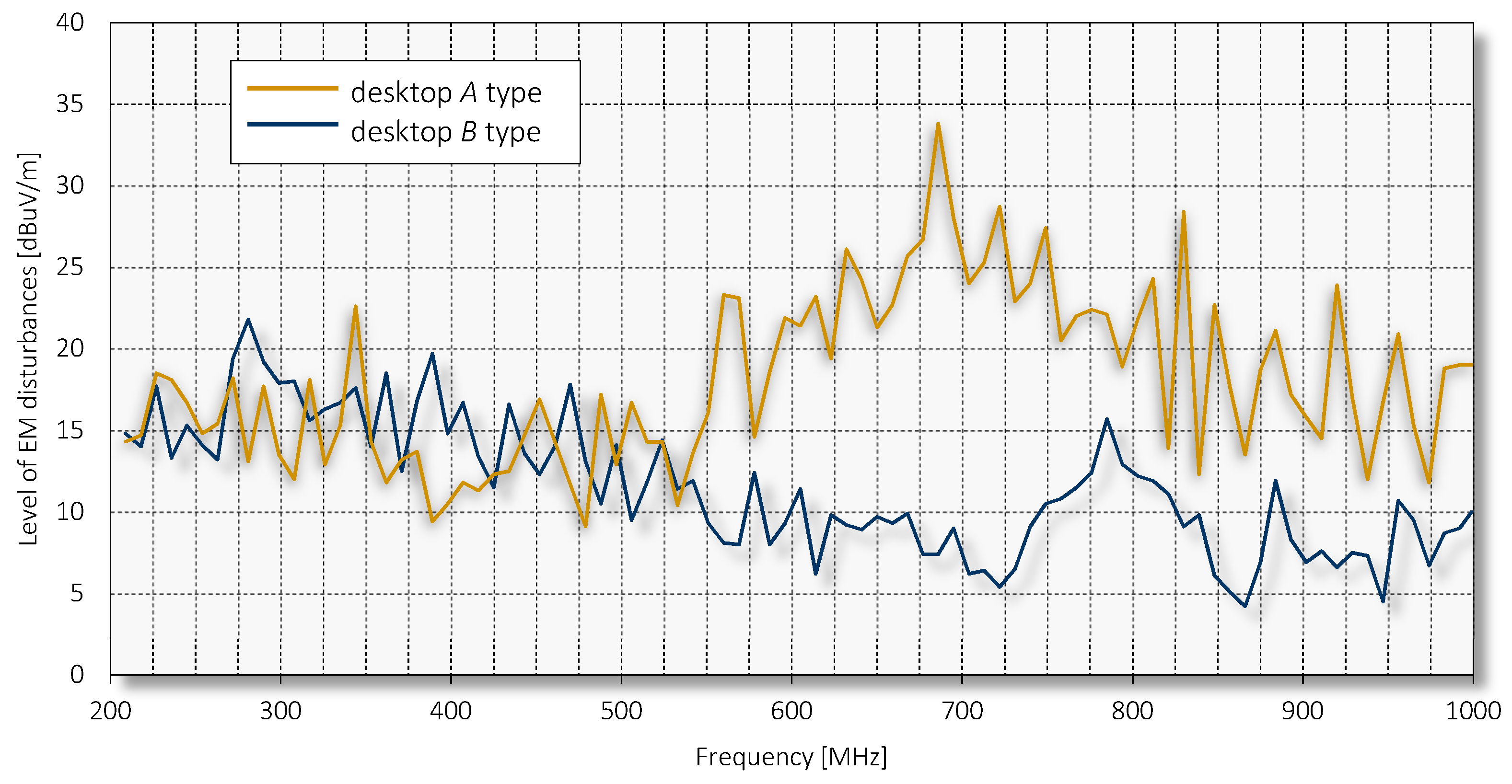
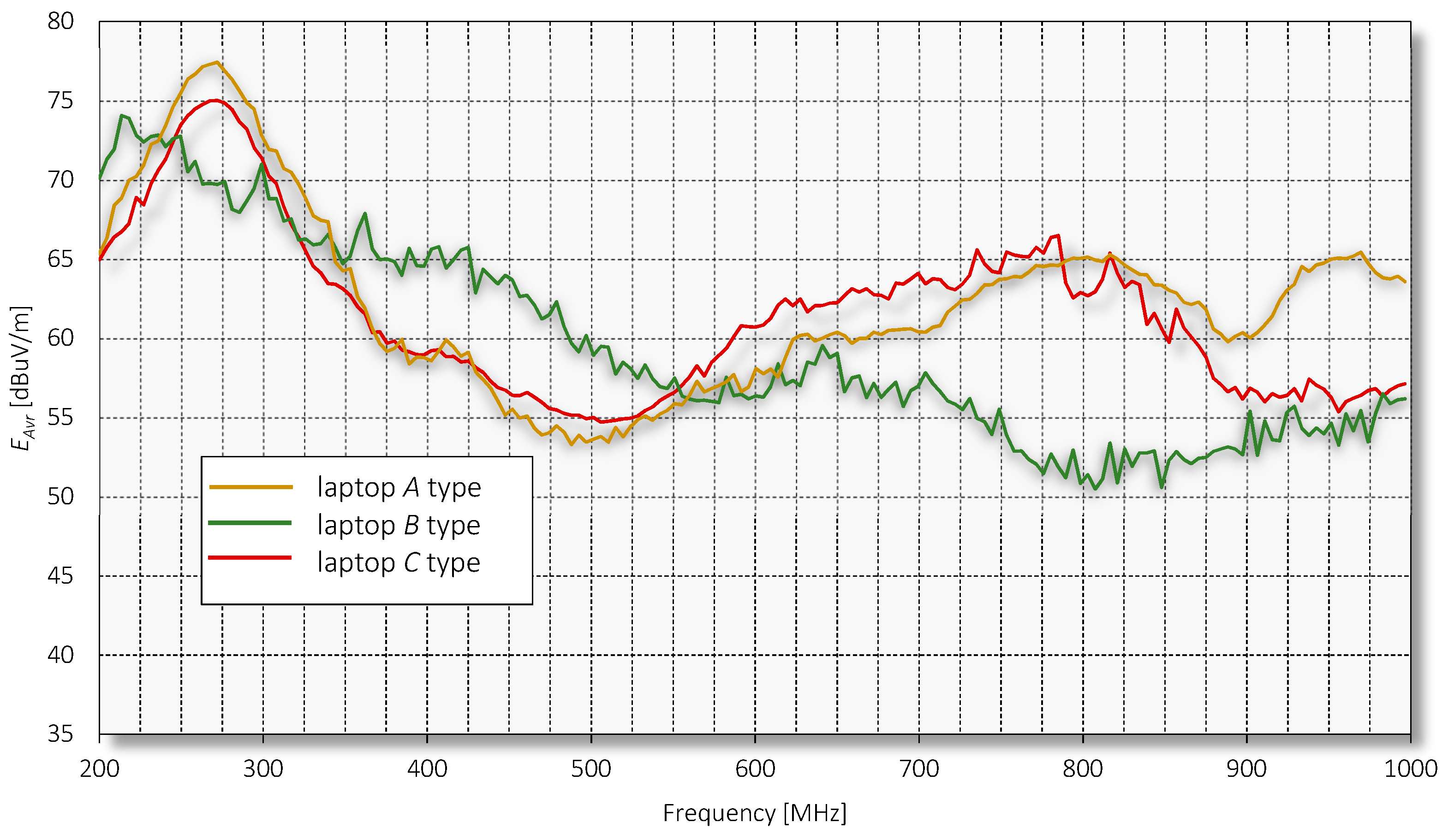
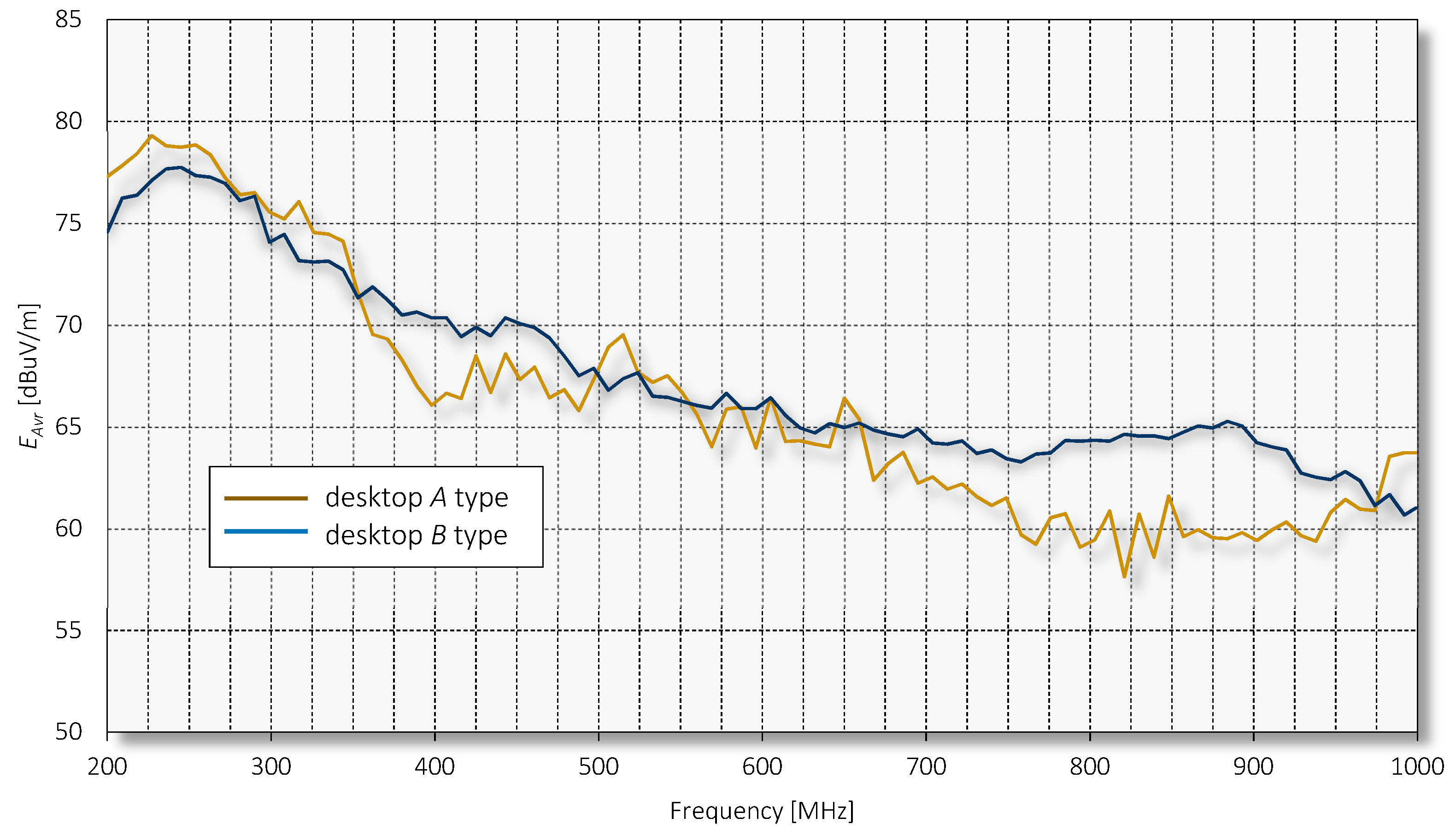
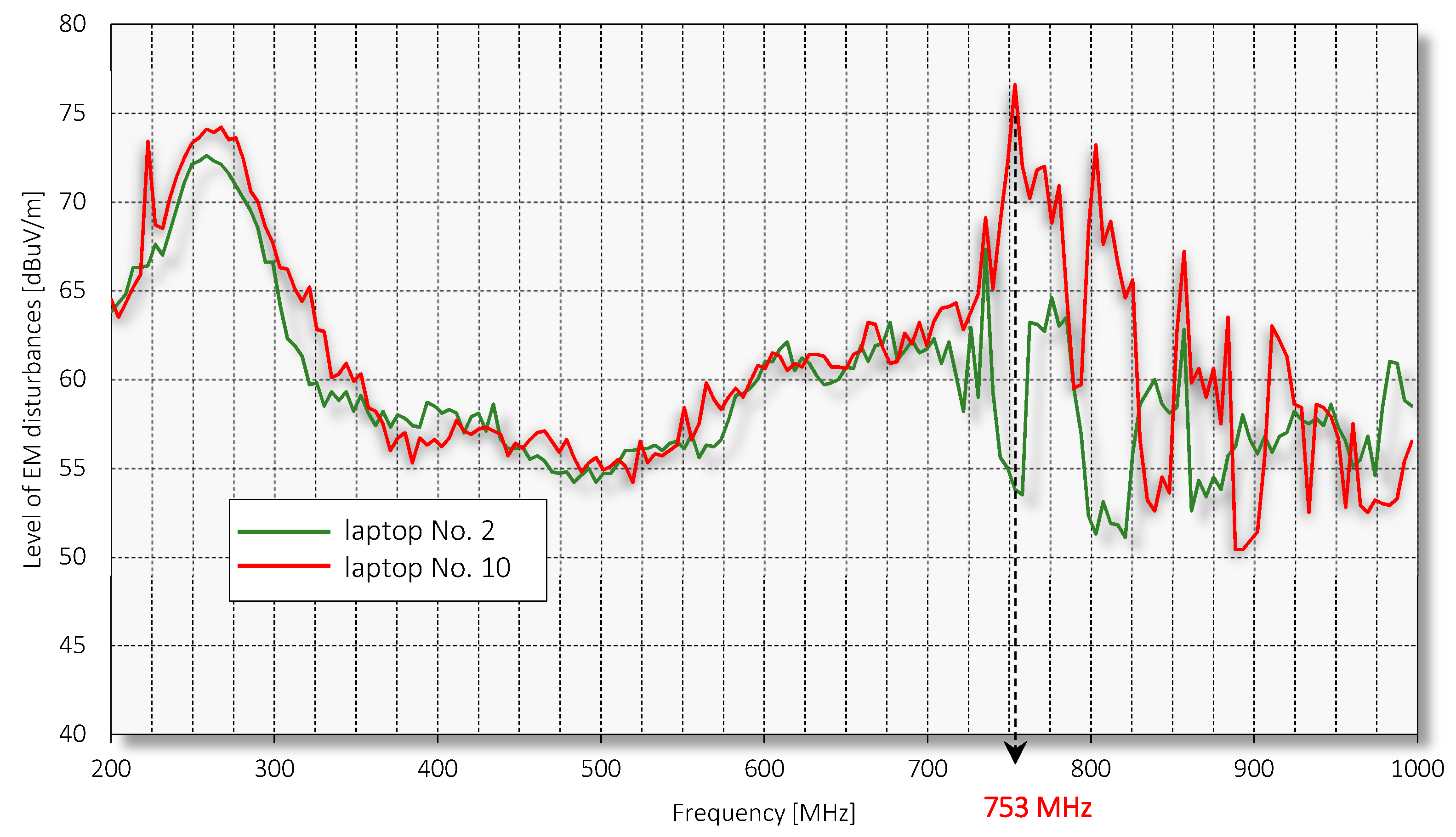

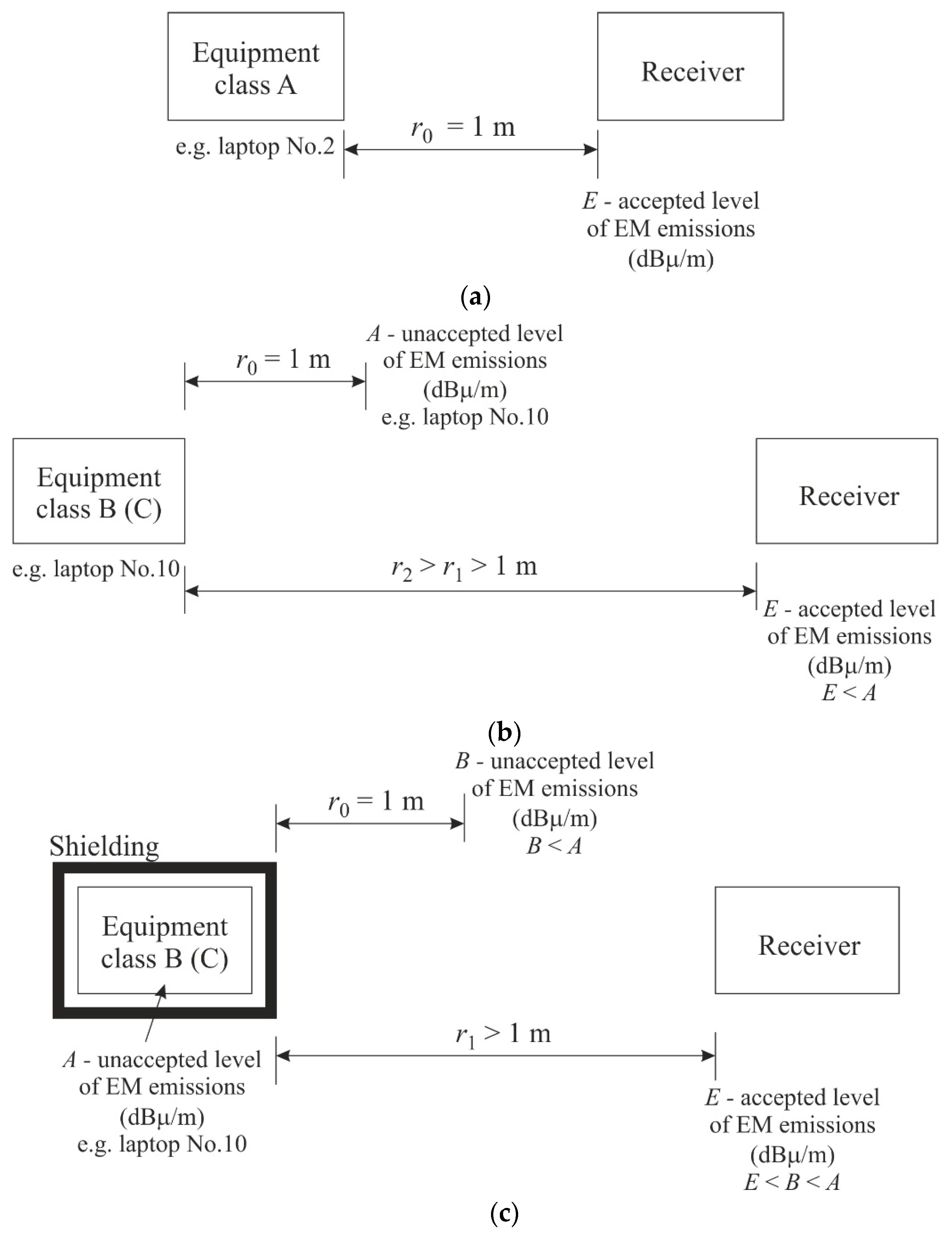
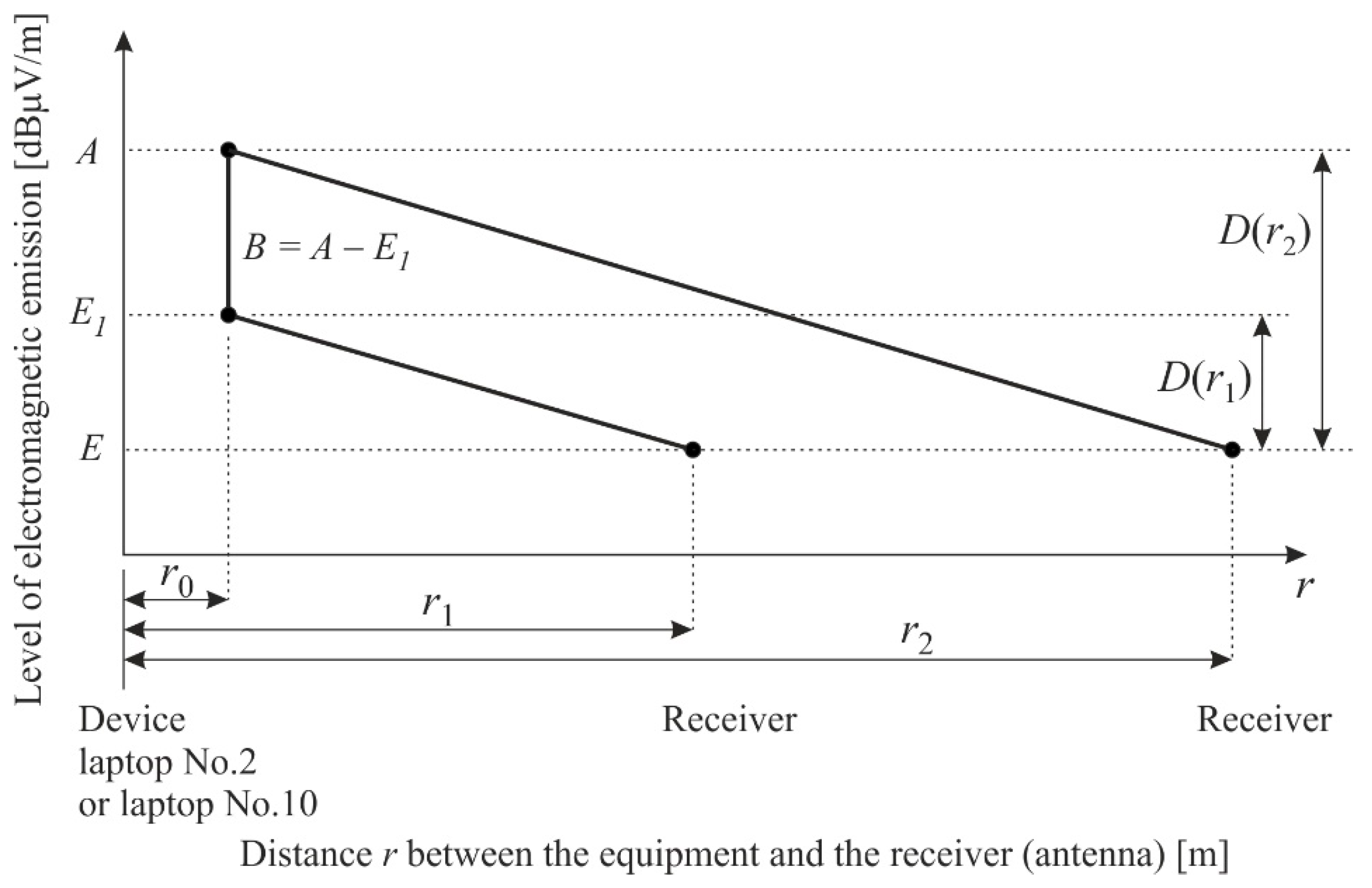
© 2019 by the author. Licensee MDPI, Basel, Switzerland. This article is an open access article distributed under the terms and conditions of the Creative Commons Attribution (CC BY) license (http://creativecommons.org/licenses/by/4.0/).
Share and Cite
Kubiak, I. Impact of IT Devices Production Quality on the Level of Protection of Processed Information against the Electromagnetic Infiltration Process. Electronics 2019, 8, 1054. https://doi.org/10.3390/electronics8091054
Kubiak I. Impact of IT Devices Production Quality on the Level of Protection of Processed Information against the Electromagnetic Infiltration Process. Electronics. 2019; 8(9):1054. https://doi.org/10.3390/electronics8091054
Chicago/Turabian StyleKubiak, Ireneusz. 2019. "Impact of IT Devices Production Quality on the Level of Protection of Processed Information against the Electromagnetic Infiltration Process" Electronics 8, no. 9: 1054. https://doi.org/10.3390/electronics8091054
APA StyleKubiak, I. (2019). Impact of IT Devices Production Quality on the Level of Protection of Processed Information against the Electromagnetic Infiltration Process. Electronics, 8(9), 1054. https://doi.org/10.3390/electronics8091054




